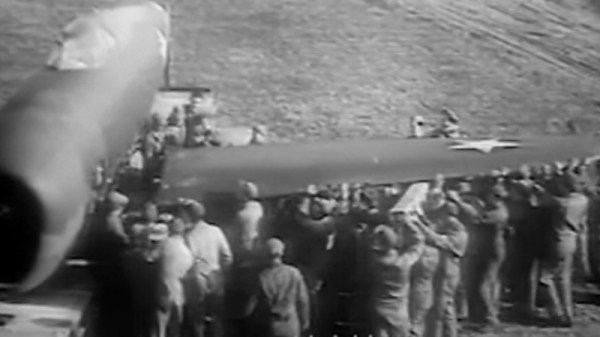Although we think of air-to-air radar as a relatively modern invention, it first made its appearance in WWII. Some late war fighters featured the AN/APS-13 Tail Warning Radar to alert the pilot when an enemy fighter was on his tail. In [WWII US Bombers]’ fascinating video we get a deep dive into this fascinating piece of tech that likely saved many allied pilots’ lives.
Fitted to aircraft like the P-51 Mustang and P-47 Thunderbolt, the AN/APS-13 warns the pilot with a light or bell if the aircraft comes within 800 yards from his rear. The system consisted of a 3-element Yagi antenna on the vertical stabilizer, a 410 Mhz transceiver in the fuselage, and a simple control panel with a warning light and bell in the cockpit.
In a dogfight, this allows the pilot to focus on what’s in front of him, as well as helping him determine if he has gotten rid of a pursuer. Since it could not identify the source of the reflection, it would also trigger on friendly aircraft, jettisoned wing tanks, passing flak, and the ground. This last part ended up being useful for safely descending through low-altitude clouds.
This little side effect turned out to have very significant consequences. The nuclear bombs used on Hiroshima and Nagasaki each carried four radar altimeters derived from the AN/APS-13 system.
Continue reading “Bogey Six O’clock!: The AN/APS-13 Tail Warning Radar”











